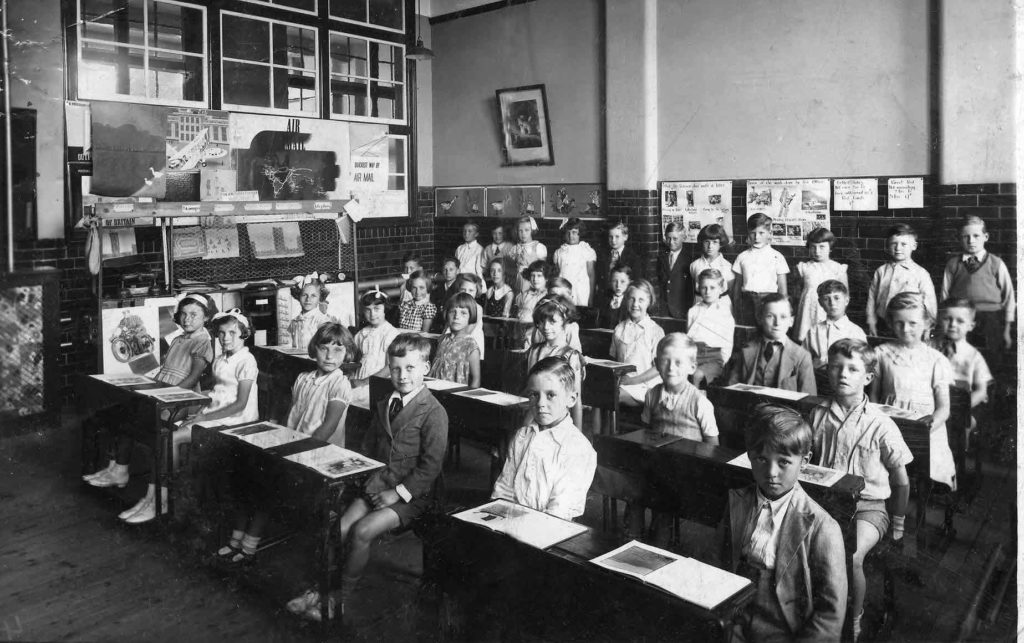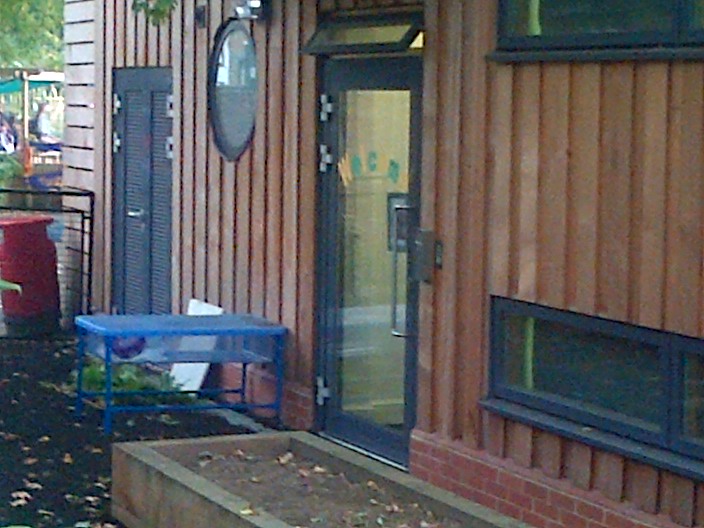The costs of raising a child on the autism spectrum varies from one country to another. But we though it would be useful to share Iris Lee’s article on the cost of bring up a child with ASD in Malaysia.
Close to 30,000 children with disabilities were registered in Malaysia in 2012, and 19,150 of them were children with learning disabilities, according to UNICEF’s record.
Learning difficulties are intellectual capabilities that are not on par with a person’s biological age, such as Down Syndrome, Late Global Development, Autism Spectrum Disorder (ASD), Attention Deficit Hyperactivity Disorder (ADHD), and dyslexia.
According to BERNAMA’s report in 2014, it is estimated that one out of every 600 children in Malaysia is born with autism. The article also shared recent statistics that revealed about 47,000 of the people in this country are autistic, with an estimation of four out of every 10,000 suffering from severe autism.
Autism is increasingly common today. Having a child with special needs often leads parents to a path that is riddled with frustration, difficult decisions, interfaces with various professionals and specialists, and endless research for better understanding and alternatives. A lot of the stress of this comes from the fact that all these things add onto the already heavy financial burden of raising a child.
According to an article published by Time Money in 2014, the cost of caring for an autistic individual over his or her lifetime in the US is US$1.4 million (RM5.4 million), based on a medical journal by JAMA Pediatrics.
This eviscerating cost of raising your special needs child can sometimes derail your family’s long-term financial goals. Knowing your options and how much they cost may help you in managing and balancing your finances.
We spoke to parents of autistic children in Malaysia to find out the financial story behind their unique family and the costs involved:
Diagnosis
Often parents are the first people who notice something is amiss with their child. According to Autism Speaks, some of the early signs of autism are failure to make eye contact, being unresponsive to his or her name or the tendency to play with toys in unusual, repetitive ways.
In today’s clinical advancement and awareness, diagnosis of disorders like Autism Spectrum Disorder (ASD) is more common than before, and the chances of a professional diagnosis early on are also higher.
However, it wasn’t the case for a mother of an 8-year-old autistic child, Emily Loo, when her first child, J* was diagnosed at three years old, in 2010.
After going to a few places, J was finally brought to a Defeat Autism Now (DAN) doctor in Singapore for a full diagnosis and treatments. They spent S$600 (about RM1,417.10 at 0.4234 exchange rate in 2010) for the diagnosis, which includes the following:
1) Heavy Metal Testing -Hair Analysis
2) IGG Asian Food panel for 96 food items
3) Comprehensive Stool Analysis
4) Urine Organic Acid Test
| Total cost of diagnosis: | RM1,417 (one-time) |
This was what Loo paid for back in 2010, and it did not include the cost of other places she went to before, while in search for an answer nor the cost of going down to Singapore itself. Today, the diagnosis might cost more due to medical inflation, but you might save more on transportation as diagnosis can be easily availed in Malaysia these days. In most cases though, you may still want to get multiple opinions before arriving at a conclusion.
Biomedical interventions
Most ASD cases require life-long treatments. After diagnosis, children suffering from this disorder may have to return for doctor’s visits to ensure that their body is coping with the many supplements they are taking.
One known intervention used on ASD individuals is the biomedical intervention. Based on the National Autism Association of Northwest Indiana, “biomed utilises standard medical tests to detect such things as: excessive amounts of bad bacteria in the gut, parasites, yeast, viruses, food allergies and heavy metal toxicity. These tests point out immune system dysfunction, metabolism abnormalities and underlying biochemical imbalances which are the cause of these medical problems and lead to autistic symptoms.”
J was put on biomedical intervention as soon as diagnosed, and the regular consultations and tests with the doctor cost about RM1,200 for each visit to Singapore.
These visits were scheduled for once every four months initially, then reduced to once every eight months, and eventually they stopped going to Singapore in 2012 when Loo found another DAN doctor in KL.
The local DAN doctor charged RM900 per hour, and they were scheduled for an hour session once every five months. Depending on the supplements prescribed to the child, the doctor might require the child to undergo a few tests, which cost about RM1,000 at Pantai Hospital Kuala Lumpur then. The tests were done to determine that the child’s liver is able to cope with the many supplements he/she is taking.
| Cost for biomedical intervention (including tests) in Singapore: | RM1,200 x 3 times a year = RM3,600 a year |
| Cost for biomedical intervention in Kuala Lumpur: | RM900 x 2 times a year = RM1,800 a year |
| Cost of prescribed tests in Kuala Lumpur: | RM1,000 |
Therapies
On top of the medical bills, there are many therapies and classes that children with autism are encouraged to go through to help them cope with their disorder and to eventually be independent. One of the most common therapies that autistic children subscribe to is the Applied Behavioural Analysis (ABA) therapy.
According to Behavioural Neurotherapy Clinic in Australia, “ABA therapy is based on the principle that influencing a response associated with a particular behaviour may cause that behaviour to be shaped and controlled. ABA therapy is a mixture of psychological and educational techniques that are tailored to the needs of each individual child to alter their behaviours. ABA involves the use of behavioural methods to measure behaviour, teach functional skills, and evaluate progress.”
Home-based ABA therapy costs about RM650 for J initially when they started out with two therapists, two hours each and four times a week. This was inclusive of the supervisor fee of RM90 per hour for once a month at the beginning.
When they saw improvement in the child, Loo and her husband increased the hours to three therapists for six hours a day and five days a week. This cost RM1,050, excluding the supervisor fee, which came for an hour once every two months (RM90 every two months).
| Estimated cost for ABA therapy: | RM1,050 a month |
| Estimated supervisor fees: | RM90 every two months |
Other therapies include Occupational Therapy (OT), which is important to an ASD child as it promotes, maintains, and develops the skills needed by them to be able to function well in a school setting and beyond. Therapist helps these children to develop skills for handwriting, fine motor skills and daily living skills. OT in Malaysia costs about RM120 per session. That would come up to RM480 for four sessions a month.
In severe cases of autism, the child can be non-verbal. Speech therapy helps autistic children to improve their verbal communications, and in severe cases, communications skills to help non-verbal children express themselves.
Loo also sent J for speech therapy once a week, at RM350 for assessment, RM135 per hour session, once a week. The cost came up to RM540 a month, and a one-time fee of RM350.
Another mother, Tan Wee Ling, a mother of a seven-year-old autistic son, enrolled him to speech therapy as well. According to Tan, speech therapy cost about RM70 per half an hour.
| Total cost for OT and speech therapy: | RM1,020 a month |
| One-time assessment fee for speech therapy: | RM350 |
J attends Speechelp in Petaling Jaya.
Special needs education
Education is one of the most important steps to preparing your special needs child’s future. Some of the main criteria a parent looks out for when choosing a school for their ASD kids are the teachers/therapists’ expertise in the field, cost, environment and facilities in the school. On top of this, location also plays quite an important factor.
Though special needs Malaysians who are enrolled in a national school are entitled to an allowance of RM150 from the government every month, parents still opt for private education for their special needs children mainly due to the lack of experienced teachers and facilities in national schools.
Private special needs education is expensive, and inclusive education where special needs children are able to learn together with neurotypical children is hard to come by.
Although generally private special needs education is more expensive than private schools for neurotypical children, comparing costs of the many special needs schools can still help you find one that will fit your budget.
Sending her son to school costs Loo about RM4,000 a month for half-day programme, and an additional RM1,500 every six months for other miscellaneous charges.
Mark Jackson, a father of a 13-year-old child diagnosed with autism and multiple disorders (speech and occupational), spends about RM4,500 a month on school fees. However, as the school his son attends also provide speech and occupational therapies, he does not need to fork out additional money for these therapies outside of school.
| Total cost of education: | RM3,550 to RM4,500 a month |
The schools quoted are Hope Bridge and The Learning Connection.
Extra-curricular classes
Enrichment classes are highly encouraged for children with ASD as they promote socialisation, friendship building, and other enrichment opportunities, which can be of great benefit to these children.
Here are some of the common classes available for special needs children:
- Gym
To train the child on their gross motor skills and body awareness, gym classes are available for these special children, and this easily costs RM130 to RM150 a month.
According to the Journal of Music Therapy 2004, music was found beneficial as interventions for children and teens with ASD. It was found to improve social behaviours, increase focus and attention, improve communication such as vocalisations, verbalisations, gestures, and vocabulary, reduce anxiety, and improve body awareness and coordination.
As such, Tan enrolled her son for music classes which sets her back by RM180 a month.
Children with autism benefit greatly from physical activity such as swimming, as they can help them improve speech, coordination, social skills, self-esteem, and cognitive processing (Autism Spectrum Disorder Foundation (ASDF)).
All three parents interviewed send their children to swimming classes, specialised in special needs children. This can cost about RM200 a month.
Though, these fees are not much higher than what you would pay to send a neurotypical child to these classes, they are more important to ASD children compared to other children. Missing classes or opting out of these classes may affect the child’s improvement.
| Cost of extra-curricular classes: | RM530 a month |
Gym fee is based on a gym in Bandar Sunway, swimming is based on the rate of a specialised special needs swimming instructor in Bangsar.
Special diet
Autism is a complex disorder, and many interventions include elimination of allergens such as gluten and casein from the child’s diet. According to Autism Research Institute, dietary intervention is a medical approach with convincing practical evidence that special diets help many with autism. What this means is, without following the right diet, medical treatments might not be as effective.
Many parents of ASD children observed behavioural improvement when their children eat a gluten- and casein-free diet. Gluten is found primarily in wheat, barley and rye, while casein, in dairy products.
Loo, believes this helped J, and she constantly stocks up on such food. Initially, when they used to go to Singapore for J’s medical follow-up consultation, she would stock up on gluten- and casein-free food products there, as these products were not easily available in Kuala Lumpur back then. She spent RM300 on these every visit.
As these products became more commonly available in Malaysia, she started shopping for the specific food for J in Malaysia. However, with inflation, the cost of food has also increased. When J was still on gluten- and casein-free diet, she used to spend RM170 a week on special allergen-free and organic food for him.
| Special diet: | RM680 a month |
How much does everything cost?
A special needs child needs so much more attention and intervention to help, and all of these cost money. Here is a list of expenses a parent with a special needs child can expect:
| Item | Cost | Frequency |
| Diagnosis | RM1,417 | One-time cost |
| Biomedical intervention | RM2,800 | Yearly |
| Therapies | RM2,070 | Monthly |
| Supervisor fees for therapies | RM540 | Yearly |
| Assessment for Occupational Therapy | RM350 | One-time cost |
| Special needs education | RM4,500 | Monthly |
| Extra-curricular classes | RM530 | Monthly |
| Special diet | RM680 | Monthly |
| Total cost | ||
| Total one-time cost | RM1,767 | |
| Total yearly cost | RM96,700 | |
Yes, the sad truth is, to provide proper and the best help for your special needs child in Malaysia is not cheap.
Education is one of the most expensive aspect of raising a special needs children, and if private education is not an option, parents can still consider national schools. Here’s a list of government schools that offer special education.
Therapy and schooling options are also available for those who are financially tight. National Autism Society of Malaysia (NASOM) offers vocational, residential, early intervention, mainstreaming, pre-vocational, and transition programmes, therapies and assessment and diagnosis, with 19 centres across Peninsular and East Malaysia.
The IDEAS Autism Centre (IAC) in Rawang also offers special needs education and therapies for ASD children from low-income families.
For parents who would like to continue the therapy with the child at home, ANDI Initiative, led by Intan Miranti, offers a 5-month parent training programme, since 2007, to equip parents with more skills and support to teach their child the missing skills, and to manage their child’s behaviour in a child-respectful manner. The average cost for the training programme is RM650 per month, with total cost coming up to RM3,250.
This may seem like a big sum for most parents, but being equipped with the skills to support your child at home may be able to save you cost on therapies in the long-run. The intakes for the programme run twice a year.
Whichever option you choose for your ASD child, some of the most important factors that Jackson, the father of an ASD teen considered are, firstly, the qualification and expertise of the teachers and their experience in managing special needs children. Secondly, ask if they have a well-rounded curriculum that caters to the needs of the child whether it’s physical or educational, or both.
“As a parent, you need to identify where in the spectrum does your child “fit”, and with the help of the teachers, work out a plan for your child’s needs,” added Jackson.
Parents of special needs children are constantly going against the flow that society set on what constitutes good and healthy children. It’s undoubtedly tiring trying to change the world’s view on their child and you’d always want to make it easier by reducing the pressures on your finances.
With the costs we’ve illustrated above, we hope that parents of ASD children will have an idea of what costs to expect and to factor that in to where they stand financially. This will help them plan and rein in their finances if needed to cope with the additional financial costs.
Parents of autistic children worry about what the future will hold for their special children, but perhaps, we just need to take a glimpse into the world of an autistic child to understand them better.
As said by Chuck Grassley, a senior United States Senator from Iowa, “What makes a child gifted and talented may not always be good grades in school, but a different way of looking at the world and learning.”
* Name has been changed to protect the identity of the child.
The article is contributed by iMoney.my, Malaysia’s leading financial comparison website. Compare and apply for the best products, such as credit card, broadband and personal loans, visit www.iMoney.my




